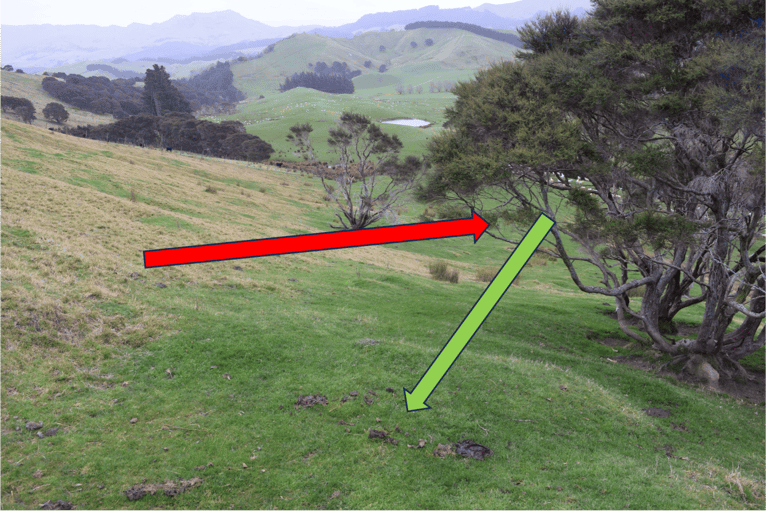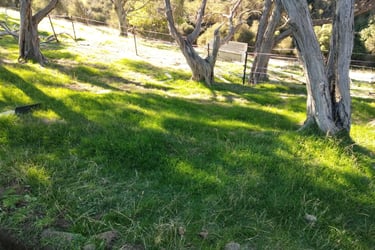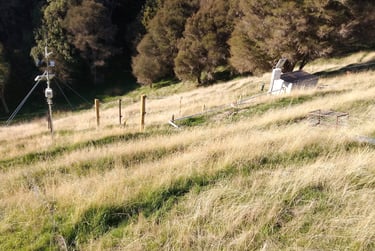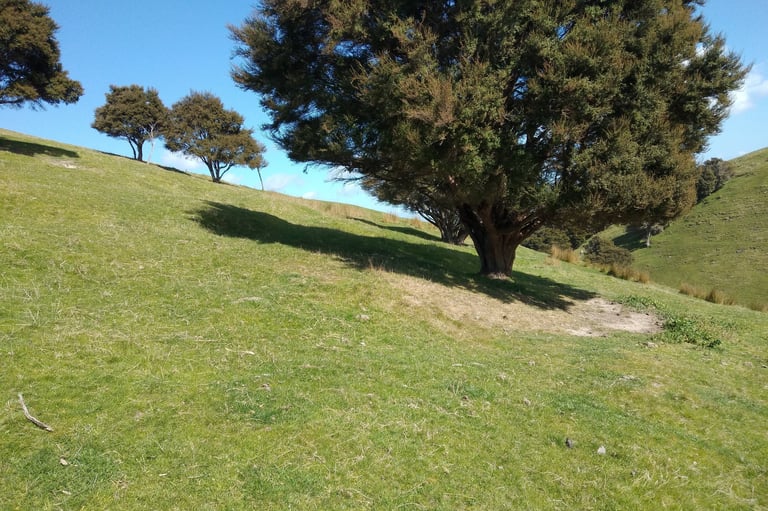The two most common criticisms of our kānuka study
Blog post.
Tom Mackay-Smith and Raphael Spiekermann
4/26/20243 min read
We get many critiques regarding our study that found 108% greater grass growth under widely-spaced kānuka. The results are almost too good to be true.
If you missed our last newsletter that described this study, you can find it here.
Here are the two most common comments we receive.
Nutrient re-distribution
Because of the build-up of nutrients under the trees, many people say that the results are just nutrient re-distribution from the open areas of the paddock to under the trees. They suggest that the productivity of the whole paddock may not have increased as a result.
This is a valid concern.
There was definitely a strong livestock influence under the trees. But we don’t see that as a problem. Nutrients naturally move from high slopes to low slopes in a paddock where they are generally in excess (1). Why can’t we use the shade of the trees to help balance nutrients more evenly around the paddock?


On many farms you also see livestock camping under kānuka trees, so this livestock effect can work both ways.
We think a lot about how we can design silvopastoral systems to optimise livestock behaviour to maximise pasture production outcomes.




We also think there were other things going on under the trees besides a build-up of nutrients. Organic matter was 49% greater under the tree and in these types of observational studies it is very difficult to disentangle each of the individual effects.
Was it the trees adding organic matter to the soil? Was it the livestock depositing nutrients under the tree? Was it the livestock grazing the pasture more often under the trees? Was it the conservation of water in the soil after a summer rainfall?
We don’t know. But because of how complex agro-ecological systems are, we think it is a mistake to simplify the results only as a re-distribution of nutrients.
Livestock do not like grazing under trees
We commonly hear that livestock don’t like grazing under trees.
In another study we did at our Wairarapa site, we found evidence that grass was grazed preferentially under the trees we studied. The average grass height was 18.2 cm away from the trees and 9.6 cm under the trees during 15 measurements in 2020 and 2021 (2).
Livestock may not like grazing under trees on some farms, but they did on this farm.
This effect was clearly visible at the study site. Check out the photos below:


To overcome the limitations and criticisms of our previous work, we do plan to collect more data. We will keep you updated as this progresses.
References
1. Saggar, S., Mackay, A. D., Hedley, M. J., Lambert, M. G. & Clark, D. A. A nutrient-transfer model to explain the fate of phosphorus and sulphur in a Grazed Hill-Country pasture. Agric. Ecosyst. Environ. 30, 295–315 (1990).
2. Mackay-Smith, T. H., Burkitt, L. L., López, I. F. & Reid, J. I. The impact of a kānuka silvopastoral system on surface runoff and sediment and nutrient losses in New Zealand hill country. CATENA 213, 106215 (2022).
